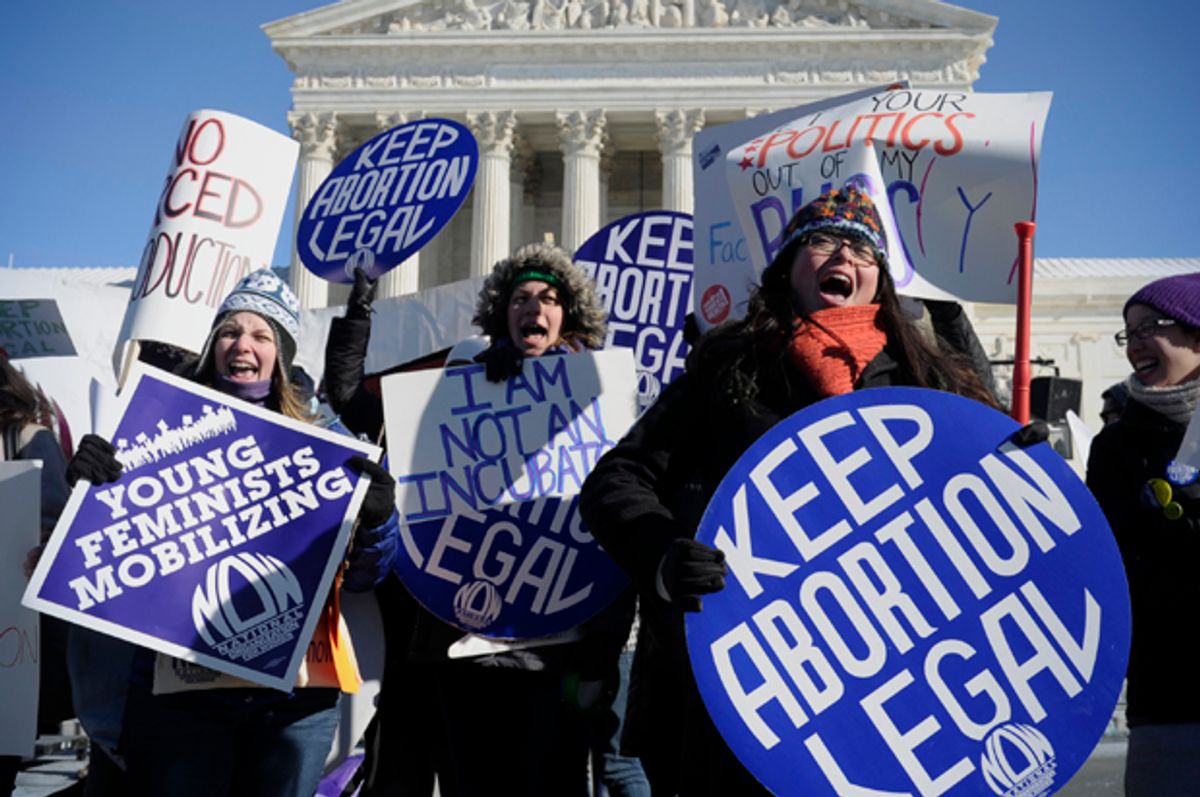The feminist policy news that got the most coverage Thursday was definitely President Obama’s historic announcement that he would be extending paid family leave to federal workers, but it wasn’t the only development playing out. While Obama introduced the change and urged Congress to advance its own proposals for paid family and sick leave, reproductive health advocates gathered in Washington to push Obama to allow foreign aid to cover some abortion care in countries where the procedure is currently legal.
For those who aren’t familiar with it, the Helms Amendment was part of a 1973 foreign assistance bill that prohibited the funding of abortions performed overseas when used “as a method of family planning.” The amendment also states that no funding may be allocated “to motivate or coerce any person to practice abortion.”
The language of the amendment is both weirdly specific and vague enough to create a lot of confusion in its implementation. While it ostensibly allows for reproductive health services that provide counseling, information and post-care services related to abortion as well as funding for abortion in cases of rape, incest and life endangerment, the reality is that the Helms Amendment effectively functions as a total ban and gag rule rolled into one. The Obama administration, like previous administrations, has not acted to correct this overly broad interpretation.
Last year, Cary Pope of Ipas, a nongovernmental organization created to end preventable deaths and injuries as a result of unsafe abortion, wrote at RH Reality Check about one of the many women who has been harmed by Helms:
Meena [a 23-year-old woman with two children in Nepal] went to a local health clinic in the remote Kailali District with an unwanted pregnancy. Because the facility was U.S.-funded, the nurse there did not help Meena with a safe abortion and instead referred her to a hospital 60 miles away -- too far for Meena to travel on foot or ox cart.
So Meena tried to self-induce with sticks. She went back to the clinic two weeks later with a severe infection and was given (more traumatic and expensive) emergency treatment, considered postabortion care and thus available in a U.S.-funded program.
In 2012, a dozen members of Congress pushed for a repeal of the amendment, and reproductive rights advocates are working to put the issue back on the table. "Women already face enormous obstacles to care," Planned Parenthood president Cecile Richards said in a statement. "In correctly implementing the Helms Amendment, the Obama administration has an unprecedented opportunity to help women in desperate need around the world."
Helms is the political cousin of the Hyde Amendment, a domestic law that bans federal funding for abortion care except in cases of rape, incest and life endangerment. As the 42nd anniversary or Roe v. Wade approaches, advocates are organizing to bring attention to how both policies disproportionately impact low-income women and women of color in their ability to access and pay for essential healthcare.
While repeal of Helms (and Hyde) may feel like a pipe dream at a moment of increasing restrictions on abortion, advocates are hoping that a clarification of the amendment could be a lifesaving stopgap for the nearly 50,000 women who die each year from unsafe abortion.

Shares